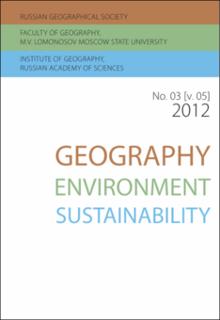Aerospace mapping of the status and position of northern forest limit
Peer reviewed, Journal article
Published version

Åpne
Permanent lenke
https://hdl.handle.net/11250/3076635Utgivelsesdato
2012Metadata
Vis full innførselSamlinger
- Publikasjoner fra CRIStin - NINA [2397]
- Scientific publications [1423]
Originalversjon
Geography, Environment, Sustainability. 2012, 5 (3), 28-47. 10.24057/2071-9388-2012-5-3-28-47Sammendrag
We study changes in the position of the northern forest limit and state of vegetation in the taiga-tundra ecotone through aerial and satellite imagery in the context of climate variability and of the projected advance of forests to the north. Our research of reference sites in Kola Peninsula and in Central Siberia has been part of PPS Arctic project of the International Polar Year. Studying the dynamics of ecotones by remote sensing is difficult due to poor display of ecotone vegetation in satellite images, and this required a range of techniques, regionally adapted and based on remotely sensed data of different spatial resolution. We characterize the newly developed techniques that enabled to identify vegetation change in recent decades: advance of forest up the slopes by 30 m in the Khibiny Mountains; advance of lichen-dwarf shrub tundra into lichen tundra in the north of Kola Peninsula; increasing stand density in sparse larch forests in the Khatanga River basin in the Taimyr Peninsula. taiga-tundra ecotone, dynamics of the forest limit, satellite images Aerospace mapping of the status and position of northern forest limit
